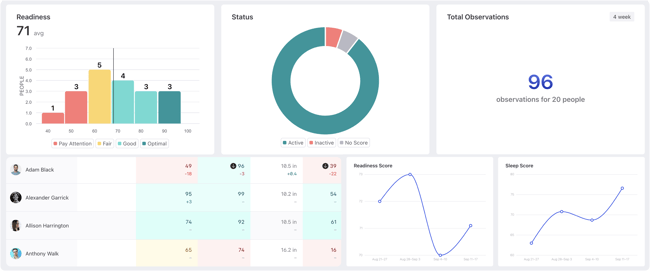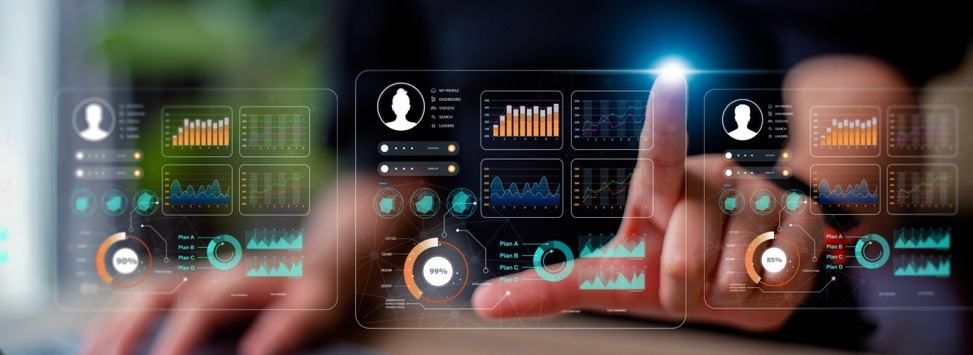What We'll Cover
- What data is considered human observation data, including some examples.
- The value and insights that can be derived from human observation data.
- Special considerations that must be made when storing and analyzing this data.
Show me the summary!
In the realm of data-driven insights, one data category stands apart in its complexity and potential for transforming businesses and industries - human observation data. Unlike standardized financial or manufacturing data, human observation data captures the intricate fabric of human behavior, physiology, and context. As we navigate the shift from traditional data paradigms to advanced data platforms, it's crucial to understand the distinct characteristics of this real-world data (RWD) and how they influence storage, analysis, and the capabilities of modern data platforms to enable human-centric businesses to optimize their most important asset, their people.
What is Human Observation Data?
Human observation data refers to information collected through direct observation or assessment of human behaviors, actions, characteristics, responses, and experiences.
This type of data is often qualitative or semi-quantitative. It is typically gathered by individuals, researchers, or teams who directly observe and record what they measure, see, hear, or otherwise perceive about human subjects. Objectively tracked human observation data is becoming more prevalent, with smartphones, wearables, and other sensor-embedded devices allowing for the collection of data related to various physiological and behavioral parameters. Human observation data can encompass a wide range of contexts, from healthcare and psychology to social sciences, sports science, and more.
Some examples of human observation data sources include:
- Clinical Assessments: Medical professionals observe and assess patients' physical and psychological conditions, noting signs, symptoms, behaviors, and measures to inform diagnosis and treatment pathways.
- Performance Analysis: Coaches and sports scientists observe and assess athletes' movements, physical characteristics, techniques, and strategies to analyze performance and provide feedback.
- Wellness Initiatives: Organizations collect data through surveys, performance, or wearable devices, allowing them to address employee well-being, stress levels, productivity, and lifestyle habits.
- Clinical Trials: Researchers observe participants' responses to treatments or interventions, noting any changes in health status, side effects, or outcomes for clinical learning.
This Data is an Asset!
A sizable human observation dataset can be an invaluable asset for organizations seeking to optimize their people.
Such a dataset, comprising objective and subjective observations of employees' behaviors, characteristics, activities, and well-being, can provide comprehensive insights that drive informed decisions and tailored strategies. This data can not only be an asset for your teams and overarching organization but can offer a clear competitive advantage in your industry, optimizing for a data-driven future while improving efficiency and outcomes.

Some examples of the value of this data and analysis are:
- Identifying Patterns and Trends: With a substantial dataset, organizations can identify patterns and trends in behaviors, health indicators, and performance metrics. This allows for detecting correlations between factors such as work hours, activity levels, stress levels, training programs, and productivity.
- Proactive or Early Intervention: With objective and subjective data, recognizing deviations from typical patterns can help organizations identify early signs of health or performance issues, enabling proactive interventions to reduce absenteeism.
- Performance Optimization: Understanding peak performance periods through observation data enables organizations to identify strengths, weaknesses, and areas for improvement, allowing for the optimization of training and scheduling.
- Data-Driven Decision Support: Observation data empowers organizations to make evidence-based decisions backed by real-world insights, mitigating assumptions and guesswork.
What Makes Human Observation Data Unique?
Unlike simple structured datasets found in more historically leveraged "big data" datasets, human observation data is rich in contextual nuances, reflecting the intricate interplay between personal factors and environmental influences. This uniqueness requires specialized data storage and analysis approaches, blending qualitative and quantitative methods, to uncover insights into human behavior, health, and performance that traditional data warehouses and platforms are not optimized for.
Some key examples of the nuance and complexity of human observation data are:
Temporal Dynamics: Humans are Variable
Human observation data often includes time-related aspects, showing how things vary or change unpredictably over time. This is especially true in wearable data, where measurements happen continuously or at set intervals. This dynamic nature captures how behavior and body indicators change over time and needs special methods to store and analyze sensor data.

Individuality: Humans aren't Markets or Machines
Unlike financial and manufacturing data that often follow general patterns, human observational data is very individual. It reflects each person's unique movements, habits, and responses. It also covers various groups of people, so we need methods that consider individual differences while spotting common trends. When improving an individual's well-being, we often focus on their unique needs, not general trends.
Data Provenance: Reliability and Transparency
Keeping track of data provenance, which includes where data comes from, how it changes, and how it's used, is crucial to ensure data's reliability and trustworthiness. This helps us confirm that the data is accurate and reliable, which is essential for data quality, following rules, and making good decisions. It also helps improve data for future use and minimizes bias, making it ready for artificial intelligence (AI).
Metadata: Context Matters
The richness of human observation data calls for a wealth of metadata. This context-enhancing information, such as environmental conditions, personal experiences, and contextual factors, enriches the analysis by providing deeper insights. This metadata requires storage capabilities optimized to track relationships between complex layers of sensor data, sampled data, and contextual data.
Blended Expertise: Qualitative and Quantitative
Human observation data can come from diverse sources, including wearable sensors, video recordings, physiological measurements, behavioral observations, and self-reported assessments. Unlike most data that has thus far capitalized on big data analytics, human observation data often involves subjective experiences and qualitative information that cannot be easily quantified, requiring further considerations for analysis.
This multimodal nature captures a holistic view of an individual's experiences and behaviors and often benefits from interdisciplinary collaboration. The analysis and interpretation of human observation data must leverage approaches outside of engineering or finance. For example, expertise and considerations from the social sciences, clinical research, behavioral psychology, sports science, biomechanics, and epidemiology are necessary to transform this data into actionable intelligence.
Security: Personal and Sensitive
Human observation data is sensitive, including behaviors, health, locations, and emotions. It needs strong privacy measures, such as encryption and access controls, to avoid misuse. Ethical concerns, consent, and data ownership make specific privacy and security rules and infrastructure crucial to protect confidentiality and individual data storage and analysis rights.
Take Home:
It is time for organizations and teams to leverage innovation in big data analysis for more human-centric optimization, but this will require specific considerations, techniques, and intentionally developed systems:
- Unlike traditional financial or manufacturing data, human observation data captures the complexities of human behavior, health, and context, making it a valuable asset for organizations.
- This data can identify patterns, support proactive interventions, optimize performance, and make evidence-based decisions, providing a competitive advantage.
- Human observation data is unique due to its temporal dynamics, individual variability, the need for data provenance and metadata, and the use of multimodal sources. It requires specialized storage and analysis techniques and interdisciplinary collaboration for actionable insights while demanding strong privacy and security measures to protect sensitive information.